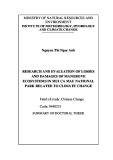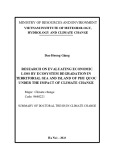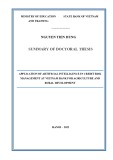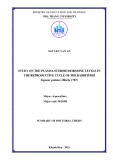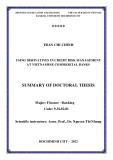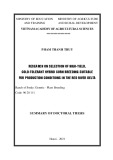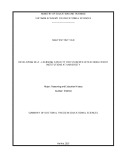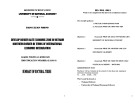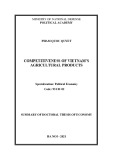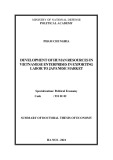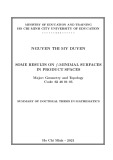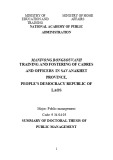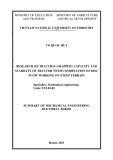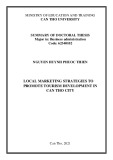
1
HEADING
1. Reason for choosing thesis topic
The development of textile and garment exports has been a target of
Vietnam's export development strategy. Textiles isn’t only large export turnover,
but also have export markets to many countries in the world. However,
Vietnam's textile and garment industry still has to produce mainly in export
processing (accounting for 70% of turnover). Vietnam has participated in many
Free Trade Agreements (FTAs) including the Trans-Pacific Partnership
Agreement (TPP) was signed in February 2016. On March 9, the CPTPP
(Comprehensive and Progression Agreement for Trans-Pacific Partnership) was
signed to replace the TPP with the 11 member states after the US withdrawal. As
"comprehensive" and "progressive" demonstrates that CPTPP will be more
feasible and comprehensive, CPTPP retains the content of the old TPP but
allows some member countries to postpone the obligations.
Rules of origin in CPTPP is always the biggest challenge for
Vietnamese textile and garment industry. Rules of origin specified products
exported from a member of the CPTPP to other members must have "internal"
origin, which products use third country raw materials, in addition to CPTPP
members don’t enjoy tax incentives. In addition, the shortage of skilled workers,
high professional skills, low labor productivity, lack of investment capital and
technology, not reply the environmental standards, labor is one of the major
challenges for the development of textile and garment exports.
Study content, criteria and factors are affecting the development of textile
and garment export, analysis the current status of Vietnam's textile and garment
export, and propose measures to develop Vietnam's textile and garment export. Nam
is an urgent issue for Vietnam's garment exports when participating in CPTPP.
2. Research objectives and tasks
Objectives of the study: Proposed solutions for the development of
Vietnam's textile and apparel exports when participating in the Comprehensive
and Progression Agreement for Trans-Pacific Partnership (CPTPP) from
clarifying the scientific basis on theoretical and practical implications for the
development of Vietnam's garment exports when participating in CPTPP.
Research tasks: To clarify the rationale for developing textile and
garment export; analyzing and assessing the current status of Vietnam's garment
export, assessing the successes, limitations and find out the reasons for
developing Vietnam's textile and garment exports; Analyzing the context and
prospects for Vietnam's textile and apparel exports, thereby introducing micro
and macro orientations and solutions for the development of Vietnam's garment
exports when participating in CPTPP.
3. Subjects and scope of study





